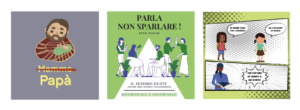The impact of the pandemic on gender equality in Academia: three case studies
On June 9th 2021, the online event “How COVID-19 impacted on gender equality in research and academia” provided the SUPERA core teams from the University of Coimbra, the University of Cagliari and the Complutense University of Madrid with the opportunity to present the preliminary results of three studies on the gendered impact of the pandemic on the academic and research communities.
The research focused on working conditions, time usage and academic production of the academic staff at UC, UNICA and UCM during the COVID-19 health emergency. The reports containing the preliminary results of the surveys have been released between February and March on the SUPERA website: see here for more details.
The official presentation of the research results has been introduced and commented by two components of SUPERA’s international advisory board: Jörg Muller, expert in concepts and methods for researching the impact of gender diversity on research performance (Open University of Catalonia), and Nicole Huyghe, expert in data analytics from a gender perspective, CEO and founder of Boobook.
Mónica Lopes, researcher at the Center for Social Studies, opened the following presentations with the results from the UC; Barbara Barbieri, Associate Professor at the Department of Political and Social Sciences, illustrated the evidences from UNICA; María Bustelo, Associate Professor of Political Science and Public Administration – and SUPERA coordinator -, closed the session with the presentation from UCM.
The slides used during the event are online on Slideshare with a CC Attribution-ShareAlike license:
- University of Coimbra (here a second resource shared);
- University of Cagliari;
- Complutense University of Madrid.
The recording of the event, including the final session with the Q&A by the participants, is available on the SUPERA’s YouTube channel at this link.













